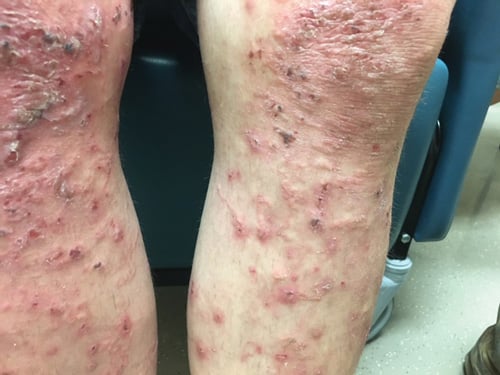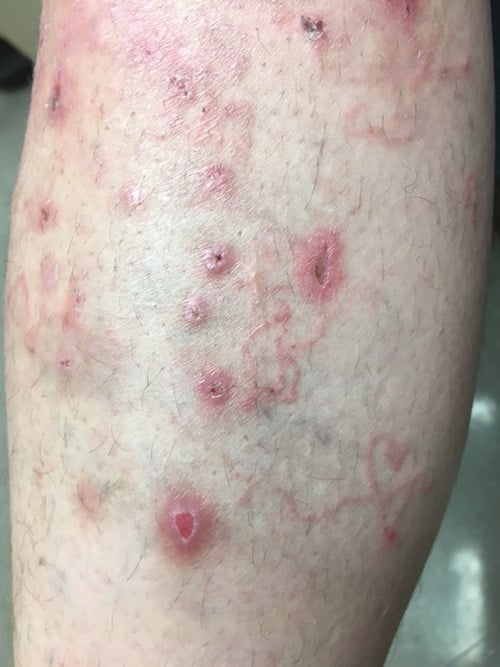 The Case.
The Case.
A 31-year-old male presents to the emergency department with a chief complaint of “rash to both legs.” Three weeks ago, the patient's vehicle was stuck in the sand at a South Texas farm. The farm is home to several types of animals. The patient reports kneeling in the sand and digging for approximately 5 hours. Within a few days, the patient noticed a rash to both lower extremities. Approximately one week later, there were additional eruptions to the right upper extremity and right flank. The patient describes the rash as small, red, “itchy” spots that migrate. He admits to scratching the affected areas, leading to scabbing. The patient denies any recent domestic or international travel. He is unaware of any other exposures.
The patient was previously evaluated at two different EDs. On the first visit, he was advised to use oral antihistamines and topical steroids. On the second visit, he was prescribed oral cephalexin. He experienced no relief of symptoms.
What is the diagnosis?
Cutaneous larva migrans
 This is a case of cutaneous larva migrans (CLM). The disease is caused by the larvae of dog and cat hookworms, most commonly Ancylostoma braziliense and Ancylostoma caninum. Parasite eggs are shed through canine or feline feces onto soil or sand. Humans who walk barefoot or lie on the ground can become infected by larval invasion through healthy, intact skin. CLM symptoms typically present within a few days of infection. Larva migrate laterally within the skin, leading to an intensely pruritic, erythematous, serpiginous track that can advance by 2 cm per day.
This is a case of cutaneous larva migrans (CLM). The disease is caused by the larvae of dog and cat hookworms, most commonly Ancylostoma braziliense and Ancylostoma caninum. Parasite eggs are shed through canine or feline feces onto soil or sand. Humans who walk barefoot or lie on the ground can become infected by larval invasion through healthy, intact skin. CLM symptoms typically present within a few days of infection. Larva migrate laterally within the skin, leading to an intensely pruritic, erythematous, serpiginous track that can advance by 2 cm per day.CLM is the most common dermatologic infection in the returning traveler, and history is usually significant for exposure to sandy beaches. CLM classically occurs in tropical and subtropical regions of the Caribbean, Gulf Coast, Latin America, Coastal Sub-Saharan Africa, and Southeast Asia, with a predisposition for individuals living in low socioeconomic settings or visiting tourists. CLM is a clinical diagnosis, and providers should also have a high index of suspicion for rashes that present as a “creeping eruption” in non-travelers, as in the case of this patient. Complications include secondary cellulitis because of excoriation and pustular folliculitis. Treatment should consist of either albendazole or ivermectin.



